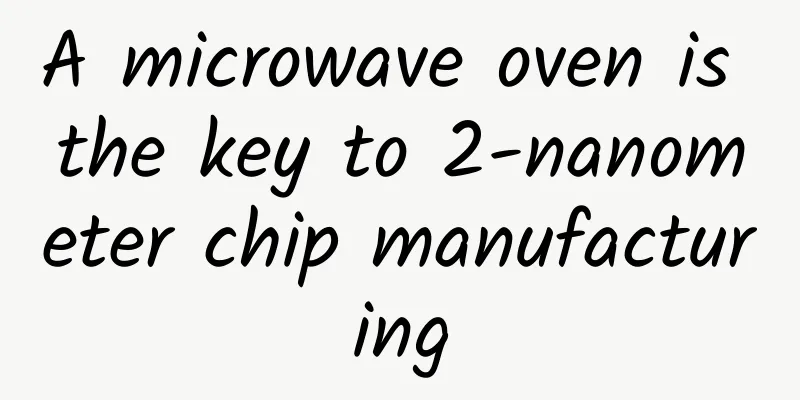A microwave oven is the key to 2-nanometer chip manufacturing

|
A home microwave oven modified by scientists is helping to create the next generation of cell phones, computers and other electronics, an invention that has proven to overcome a major challenge facing the semiconductor industry. The relevant research results were published in the scientific journal Applied Physics Letters under the title “Efficient and stable activation by microwave annealing of nanosheet silicon doped with phosphorus above its solubility limit”. James Hwang, professor of materials science and engineering at Cornell University, is one of the corresponding authors of the paper. (Source: Applied Physics Letters) As chips get smaller, silicon must be doped, or mixed, with higher concentrations of phosphorus to generate the required electrical current. Today, semiconductor manufacturers are reaching a limit where conventional methods of heating highly doped materials are no longer sufficient to produce stable semiconductors. Semiconductor maker TSMC thought microwaves could theoretically be used to activate excess dopants. But, just as a household microwave oven sometimes heats food unevenly, previous microwave annealing setups tended to create “standing waves” that prevented uniform activation of the dopants. Figure | Chip under an electron microscope (Source: Wikipedia) To this end, TSMC worked with Hwang to selectively control where the standing waves occur through a modified microwave oven, thereby activating the dopants just right without overheating or damaging the silicon crystal. "This discovery could be used to manufacture semiconductor materials and electronic products that will be produced around 2025," Hwang said. Even more, Hwang said: "Currently, only a few companies are producing 3-nanometer semiconductor materials. This new microwave method has the potential to enable chipmakers such as TSMC and Samsung to shrink the size to 2 nanometers." Photo: James Hwang (right) next to the modified microwave oven. It is reported that this breakthrough may change the geometry of transistors used in chips. For more than 20 years, in order to fit more transistors on each chip, transistors have been made to stand upright like dorsal fins. In recent years, chipmakers have begun experimenting with a new structure in which transistors can be stacked horizontally. Microwave annealing, which makes more doped materials possible, is key to making the new structure possible. References: https://aip.scitation.org/doi/10.1063/5.0099083 |
>>: It’s true that your brain stops working! Thinking can also make you tired!
Recommend
Is the "Coral Spiral" in "Return to the South Sea" mysterious? The real coral reef is eye-opening!
Not long ago, the online drama "Return to th...
The efficacy and function of rusty nails
Chinese medicine has different effects on our bod...
Chinese scientists have discovered a new drug for the treatment of COVID-19! Can cephalothin really cure COVID-19?
Recently, a new drug for the treatment of COVID-1...
The cold wave is coming! Have the long johns you bought arrived?
This article was first published by Hunzhi (WeCha...
The efficacy and function of Pueraria lobata
Pueraria lobata is a very common food in our diet...
Polymer fluids: Uncovering the amazing science behind everyday products
summary: As a special state of existence of matte...
What are the side effects of traditional Chinese medicine?
Traditional Chinese medicine is something that ma...
Effects and functions of Alnus Mengziensis
Mengzi Alnus has a long history, and up to now, i...
What are the effects of Huangweizi?
Gardenia jasminoides is a common Chinese herbal m...
The medicinal effects of Dingdu beans soaked in wine
The role and efficacy of Dingdu beans Dingdudou i...
When you fall down due to high-voltage wires, don’t run. The standard life-saving posture is so funny?
High-voltage wires are dangerous. It is common se...
Why do doctors also think spring is the golden season for growing taller?
Spring is the season for all things to grow, incl...
Alcohol, iodine, gentian violet... Which one should I use to treat wounds? | Science Museum
Alcohol, iodine, gentian violet... Which one shou...
The efficacy and function of Vitex rotundifolia
In our lives, Vitex rotundifolia has attracted ou...









